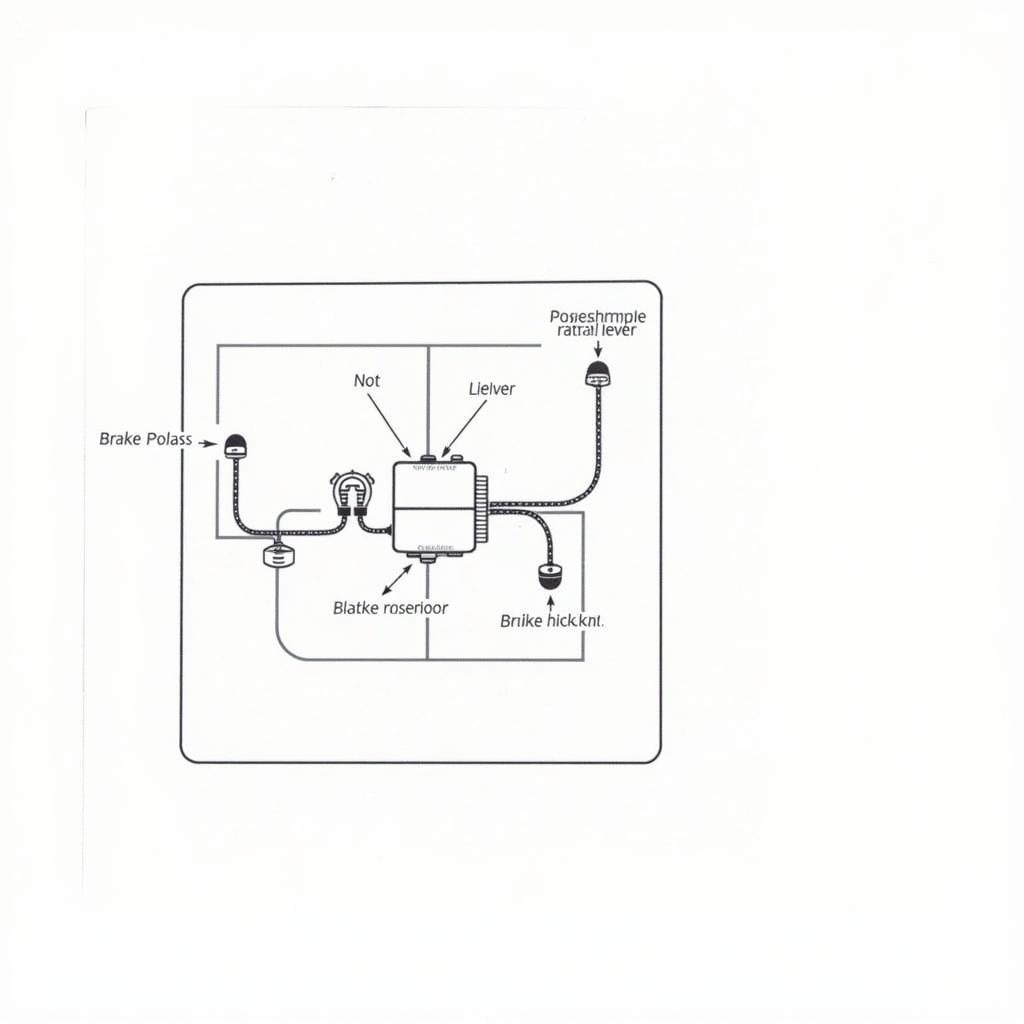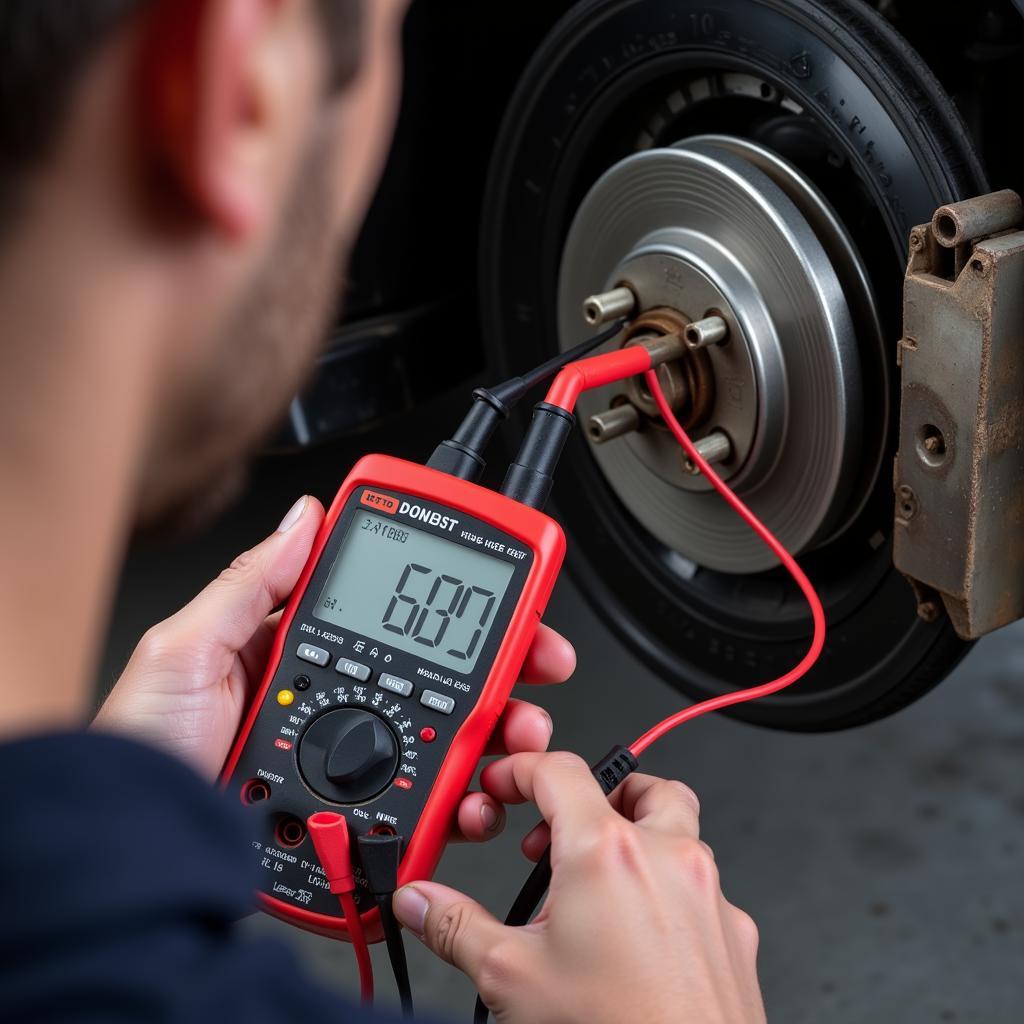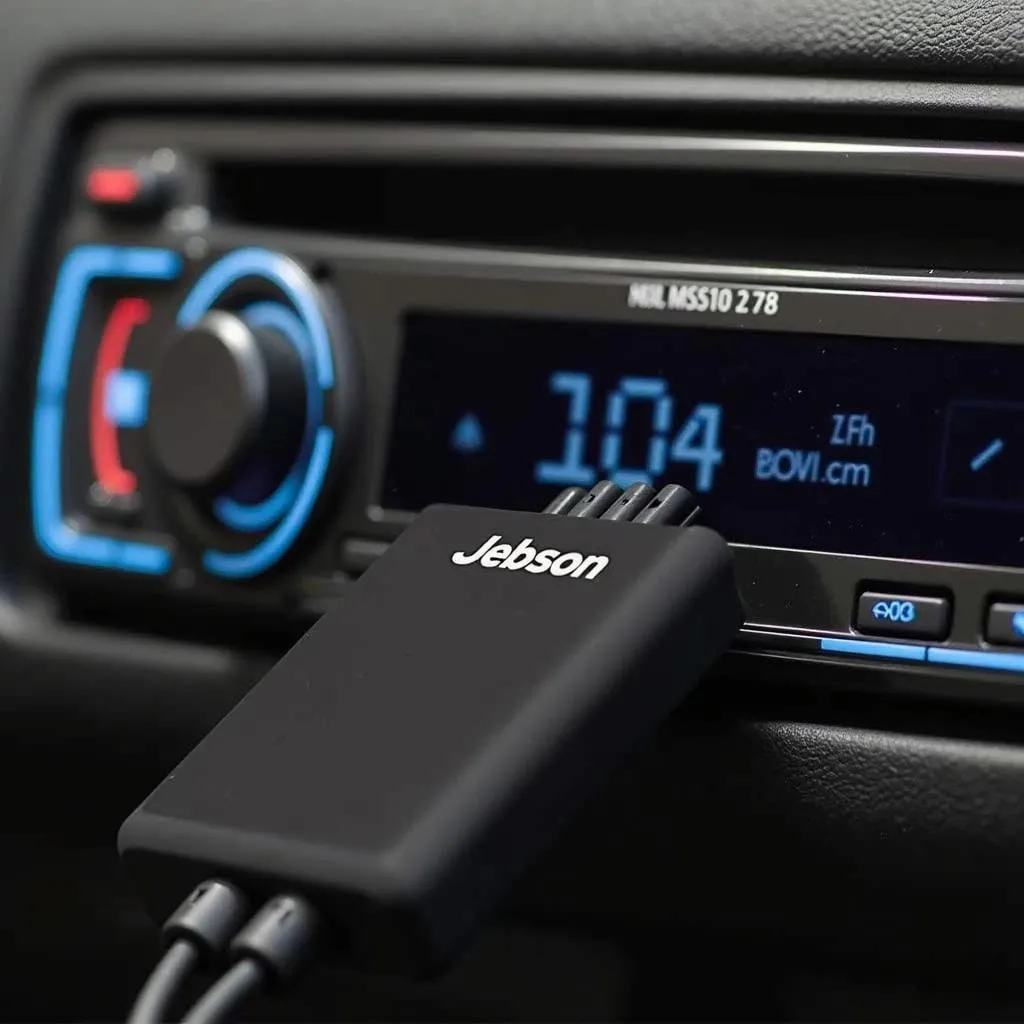The car brake warning light on your dashboard is a crucial safety feature. When illuminated, it signals a potential issue with your braking system, specifically related to the car brake warning wire. Ignoring this warning can lead to dangerous driving conditions and expensive repairs. This guide will delve into the common causes, symptoms, and solutions related to car brake warning wire problems.
Understanding the Car Brake Warning Wire
The car brake warning wire plays a vital role in your vehicle’s safety system. It’s an integral part of the electrical circuit that connects your brake pedal, brake fluid level sensor, parking brake, and the warning light on your dashboard.
When you press the brake pedal, engage the parking brake, or if the brake fluid level drops too low, the car brake warning wire carries an electrical signal to illuminate the warning light, alerting you to a potential issue.
 Car Brake Warning Wire Diagram
Car Brake Warning Wire Diagram
Common Causes of Car Brake Warning Wire Problems
A malfunctioning car brake warning wire can be attributed to several factors. Here are some of the most common culprits:
- Worn-out Wires: Over time, the insulation on the car brake warning wire can degrade due to heat, friction, and exposure to moisture and road debris. This can lead to short circuits or open circuits, disrupting the signal flow.
- Damaged Connectors: The connectors that join the car brake warning wire to various components can become corroded, loose, or broken. This can result in a poor electrical connection, leading to intermittent or complete signal loss.
- Rodent Damage: Rodents are notorious for chewing on vehicle wiring, and the car brake warning wire is no exception. Their sharp teeth can easily pierce through the wire’s insulation, causing shorts or open circuits.
- Improper Installation: Incorrect installation of aftermarket components or poorly executed repairs involving the braking system can damage the car brake warning wire or its connections.
- Brake Fluid Issues: While not directly related to the wire itself, a low brake fluid level or the use of incorrect brake fluid can trigger the brake warning light. It’s crucial to address these issues promptly to prevent further complications.
Symptoms of a Faulty Car Brake Warning Wire
Recognizing the symptoms of a problematic car brake warning wire is essential for addressing the issue promptly. Keep an eye out for the following signs:
- Illuminated Brake Warning Light: The most obvious symptom is a continuously illuminated brake warning light on your dashboard, even when the brake pedal is not pressed and the parking brake is disengaged.
- Dimming or Flickering Brake Warning Light: A brake warning light that dims or flickers when you apply the brakes could indicate a loose connection or a partially damaged wire.
- Intermittent Brake Warning Light: If the brake warning light comes on and off intermittently without a consistent pattern, it suggests a loose connection or a damaged wire that intermittently loses contact.
- No Brake Warning Light: In some cases, a completely severed or severely damaged car brake warning wire may prevent the warning light from illuminating at all, even if there’s a genuine issue with the braking system.
Troubleshooting Car Brake Warning Wire Problems
“Troubleshooting electrical issues in a car can feel like searching for a needle in a haystack,” says Jake Anderson, Senior Automotive Electrician at Autospark Technologies. “However, with a systematic approach and a good understanding of the car’s wiring diagram, you can often pinpoint the problem with the brake warning wire.”
Here are some steps to troubleshoot car brake warning wire issues:
- Check the Brake Fluid: Before diving into electrical components, ensure the brake fluid level in the master cylinder is adequate and within the recommended range. If the fluid is low or dirty, top it up or bleed the brake system as needed.
- Inspect the Brake Warning Wire: Visually examine the car brake warning wire along its entire length, paying close attention to areas where it bends or comes into contact with other components. Look for signs of damage, wear, fraying, or rodent chewing.
- Check the Connectors: Carefully inspect the connectors at both ends of the car brake warning wire and any intermediate connection points. Look for corrosion, loose connections, or broken terminals. Disconnect and reconnect the connectors to ensure a secure fit.
- Test the Wire Continuity: Using a multimeter set to the continuity mode, test the car brake warning wire for continuity. Connect one lead of the multimeter to one end of the wire and the other lead to the other end. A continuous beep indicates a good wire, while no sound suggests an open circuit or damage within the wire.
 Mechanic Testing Brake Warning Wire
Mechanic Testing Brake Warning Wire
When to Seek Professional Help
While some car brake warning wire issues can be addressed with basic DIY troubleshooting, it’s crucial to recognize when professional help is necessary. If you’re uncomfortable working with electrical components or suspect a more complex issue, it’s best to consult a qualified mechanic or automotive electrician.
“Attempting to repair complex electrical systems without proper knowledge and tools can be dangerous and potentially worsen the problem,” advises Anderson. “If you’re unsure about any step of the troubleshooting process, err on the side of caution and seek professional assistance.”
Conclusion
The car brake warning wire is a critical component of your vehicle’s safety system. Understanding its function and being able to recognize the symptoms of a faulty wire can save you from potentially dangerous situations on the road. If you encounter any issues with your car brake warning wire, it’s essential to address them promptly to ensure your safety and the well-being of others on the road. Regular maintenance and inspections of your braking system, including the car brake warning wire, are crucial for preventing costly repairs and ensuring optimal vehicle safety.

